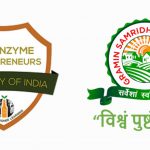
Transformative impact of UPI in Socio economic Development and ease of Life S.K. Singh
– S.K. Singh. Founder & Chief Learning officer, Gramin Samridhi Foundation. http://graminsamridhi.in
UPI system has assisted India in transitioning from a nation heavily reliant on cash for daily transactions to one with fewer cash transactions. In 2010, G20 (GPFI, 2021) developed innovative financial inclusion principles emphasizing poverty reduction in emerging economies. Financial inclusion thus requires an inclusive ecosystem with social and technological combinations and UPI delivered the desired result. UPI acts as a digital infrastructure for digital payments through apps like google pay, BHIM, phone pay for the public, and much more helpful. Post demonetization, the Indian government has made efforts to push the digital economy. The government has taken many policy initiatives to shift to the cashless economy, with increased use of ATMs, Banking cards, e-wallets, and net – banking (Cashless India 2021). The introduction of the UPI has acted as a game-changer to enable a gradual shift to the digital payment system. The Unified Payments Interface (UPI) is a real-time payment system developed by the National Payments Corporation of India (NPCI) that allows for inter-bank peer-to-peer (P2P) and person-to-merchant (P2M) transactions.
UPI’s phenomenal adoption and acceptance today is unmatched when it comes to its scale and impact in ease of small transactions. Its transformative impact on citizens, consumers, merchants, and the various players in the banking and payments ecosystem is highly visible and it has significantly changed the behavior of each of them. The ease of life extended to the common man through UP is one of its kind in the history for transactions and business. With smartphone penetration continuing to increase and rural adoption of UPI taking off, thanks to NPCI for developing and facilitating an outstanding entrepreneurial spirit in working with stakeholders and the broader ecosystem of business.
Another key design element has been to offer the customer a choice in their service provider for UPI, irrespective of which bank or financial institution hosts the customer’s account. The power of choice meant that customers could choose their preferred payment apps to access UPI for payments, versus being forced to use the service of the bank where the account was hosted. This novel App has impacted the entire globe and it has challenged the monopoly of big players for making money through Visa, Master and Amex cards. Once UPI is adopted globally Billions of dollar transaction through these privileged cards will be impacted and it may shake the current monopoly and economy to an extent not thought of today.
The success of UPI domestically has been a stepping-stone for international expansion, with the first stop being countries with a significant Indian diaspora. There are two dimensions to be looked into here, the first being the acceptance of UPI as a payment mechanism for the Indian diaspora and travellers.
The recent visit of Indian Prime Minister Narendra Modi to France, UPI is on the anvil for business and transactions in France at least in Indian diaspora there. This is a testimony of the fact that entrepreneurs can look for avenues of innovation and technological development for ease of life and ease of business will follow automatically.
it is estimated that UPI has over 260 Million (26 crore) users today, and this will continue to increase as smart devices further displace feature phones. The UPI 123PAY and UPI Lite services to support UPI for feature phones are also helping expand adoption, especially in rural areas, as per PwC’s analysis.
UPI’s value proposition, which has made it so successful, has been a combination of the power of instant payments and its great end-user experience. Starting with first-time activation and on to transacting, be it merchant payments or P2P payments, the ease of use and speed is not something that any other payment mode can offer today. It is estimated that UPI will record 1 Bn transactions per day by FY 2026–2027, according to a recent report by PwC. To promote digital transactions through UPI, the government had increased the allocation of financial incentives. (References: 1. Researchgate.net 2. Inc42.com)








